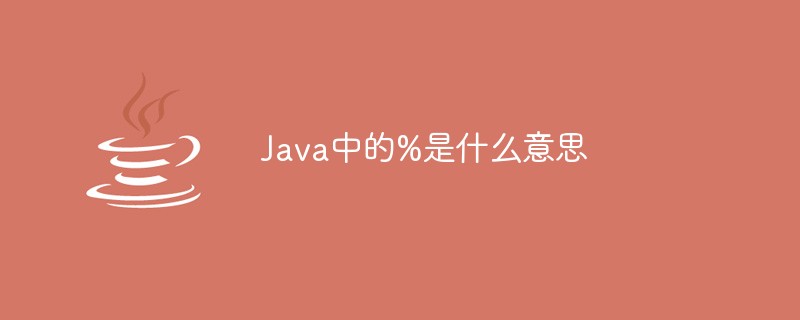
Comparison of the pros and cons of Go language operators
Go language is an open source compiled statically strongly typed language. It has the characteristics of simplicity and efficiency. In recent years, It has gradually attracted the attention and love of developers. In terms of operators in the Go language, it provides a rich series of operators, which can provide convenience when writing code and make the code more concise and readable. This article will compare the pros and cons of Go language operators from several aspects and give corresponding code examples.
- Arithmetic operators:
Go language provides common addition (), subtraction (-), multiplication (*), division (/), remainder (%), increment ( ) and decrement (--) and other arithmetic operators. Compared with other languages, the use of arithmetic operators in Go language is very concise and clear, and type inference can be performed, making the code more compact. The following is a sample code:
a := 10
b := 3
sum := a + b
fmt.Println("sum:", sum)
remainder := a % b
fmt.Println("remainder:", remainder)
a++
fmt.Println("after increment:", a)
b--
fmt.Println("after decrement:", b)- Assignment operators:
Assignment operators in Go language include common assignments (=), addition assignments (=), and subtraction assignments ( -=), multiplication assignment (*=), division assignment (/=), etc. Compared with other languages, the assignment operator in Go language can assign values to multiple variables at the same time, improving the readability of the code. The following is a sample code:
a := 10
b := 3
a += b
fmt.Println("a:", a)
b *= 2
fmt.Println("b:", b)- Relational operators:
Go language provides common relational operators, such as equal (==), not equal (!=), Greater than (>), less than (=), less than or equal to (
a := 10
b := 3
fmt.Println("a == b:", a == b)
fmt.Println("a != b:", a != b)
fmt.Println("a > b:", a > b)
fmt.Println("a < b:", a < b)
fmt.Println("a >= b:", a >= b)
fmt.Println("a <= b:", a <= b)- Logical operators:
Go language supports logical AND (&&), logical OR (||), logical NOT (!) and other common ones Logical Operators. Compared to other languages, logical operators in Go can be applied to multiple conditions and can be used for any type of Boolean value. The following is a sample code:
a := true
b := false
fmt.Println("a && b:", a && b)
fmt.Println("a || b:", a || b)
fmt.Println("!a:", !a)Through some of the above sample codes, we can easily see that the operators of the Go language are relatively simple and clear in use, and can be well adapted to many data type, and the operation results are in line with our expectations.
To sum up, the operators of Go language have the following advantages:
- Concise use: The operators of Go language are concise and clear to use, which can improve the readability and maintainability of the code. .
- Type inference: Go language operators can perform type inference, making the code more compact.
- Widely applicable: Go language operators are suitable for various data types, and the operation results are in line with our expectations.
Of course, the operators of each language have their own unique characteristics and applicable scenarios, so when choosing a programming language, you need to consider the actual needs.
The above is the detailed content of Compare the pros and cons of Go language operators. For more information, please follow other related articles on the PHP Chinese website!
 c语言开根号运算符是什么Mar 06, 2023 pm 02:39 PM
c语言开根号运算符是什么Mar 06, 2023 pm 02:39 PM在c语言中,没有开根号运算符,开根号使用的是内置函数“sqrt()”,使用语法“sqrt(数值x)”;例如“sqrt(4)”,就是对4进行平方根运算,结果为2。sqrt()是c语言内置的开根号运算函数,其运算结果是函数变量的算术平方根;该函数既不能运算负数值,也不能输出虚数结果。
 Java中的%是什么意思Mar 06, 2023 pm 04:48 PM
Java中的%是什么意思Mar 06, 2023 pm 04:48 PM在Java中,“%”是取余的意思,是一个二元算术运算符,可进行除法运算并获取余数,语法“操作数1 % 操作数2”。取余运算符“%”的操作数通常是正整数也可以是负数甚至是浮点数,如果负数参与此运算,则结果的正负取决于前面一个数是正数还是负数。
 golang 报错:“invalid use of … operator” 如何解决?Jun 24, 2023 pm 05:54 PM
golang 报错:“invalid use of … operator” 如何解决?Jun 24, 2023 pm 05:54 PM对于Golang开发者来说,“invaliduseof…operator”是一个常见的报错。这个报错通常会在使用变长参数函数时出现。它在编译时就会被检测出来,并指出哪些部分有问题。这篇文章将介绍如何解决这个报错。一、什么是变长参数函数变长参数函数也被称为可变参数函数,是Golang语言中的一种函数类型。使用变长参数函数可以像如下方式定义多个
 php中“==”符号的含义是什么Mar 14, 2023 pm 07:05 PM
php中“==”符号的含义是什么Mar 14, 2023 pm 07:05 PM在php中,“==”符号是一个比较运算符,可以比较两个操作数是否相等,语法“操作数1 == 操作数2”。“==”运算符会比较、并测试左边的变量(表达式或常量)是否与右边的变量(表达式或常量)具有相同的值;它只比较变量的值,而不是数据类型。如果两个值相同,则返回true值;如果两个值不相同,则返回false值。
 php怎么判断两个数能否整除Jan 10, 2023 pm 03:12 PM
php怎么判断两个数能否整除Jan 10, 2023 pm 03:12 PM在php中,可以使用“%”和“==”运算符来判断两个数能否整除;只需要使用“%”运算符将两个数相除获取余数,再使用“==”运算符判断获取的余数是否为0即可,语法“数1 % 数2 == 0”,如果为0则能整除,如果不为0则不能整除。
 Python中的魔法方法Apr 13, 2023 am 10:25 AM
Python中的魔法方法Apr 13, 2023 am 10:25 AMpython中的魔法方法是一些可以让你对类添加“魔法”的特殊方法,它们经常是两个下划线包围来命名的。Python的魔法方法,也称为dunder(双下划线)方法。大多数的时候,我们将它们用于简单的事情,例如构造函数(init)、字符串表示(str, repr)或算术运算符(add/mul)。其实还有许多你可能没有听说过的但是却很好用的方法,在这篇文章中,我们将整理这些魔法方法!迭代器的大小我们都知道__len__方法,可以用它在容器类上实现len()函数。但是,如果您想获取实现迭代器的类对象的长度
 go语言运算符优先级怎么排序Dec 21, 2023 pm 05:03 PM
go语言运算符优先级怎么排序Dec 21, 2023 pm 05:03 PM在Go语言中,运算符按照优先级从高到低的顺序进行计算。常见的运算符的优先级顺序:1、括号:()(最高优先级,用于强制改变运算顺序);2、单目运算符;3、乘性运算符;4、加性运算符;5、移位运算符;6、按位运算符;7、比较运算符;8、逻辑运算符;9、条件运算符(三元运算符);10、赋值运算符等等。
 go语言中运算符优先级列表,哪个运算符的优先级最高?Jan 03, 2024 pm 04:59 PM
go语言中运算符优先级列表,哪个运算符的优先级最高?Jan 03, 2024 pm 04:59 PMGo语言中有许多运算符,它们常被用于执行各种数学和逻辑运算。每个运算符有自己的优先级,这决定了它们在表达式中的计算顺序。本文将为您介绍Go语言中运算符的优先级排行榜,并找出其中优先级最高的运算符。Go语言中的运算符按照优先级从高到低的顺序如下:括号:()。括号被用于改变运算符的优先级顺序。表达式中的括号最先被计算。单目运算符:+、-、!。单目运算符是指只对一


Hot AI Tools

Undresser.AI Undress
AI-powered app for creating realistic nude photos

AI Clothes Remover
Online AI tool for removing clothes from photos.

Undress AI Tool
Undress images for free

Clothoff.io
AI clothes remover

AI Hentai Generator
Generate AI Hentai for free.

Hot Article

Hot Tools

Dreamweaver CS6
Visual web development tools

ZendStudio 13.5.1 Mac
Powerful PHP integrated development environment

MinGW - Minimalist GNU for Windows
This project is in the process of being migrated to osdn.net/projects/mingw, you can continue to follow us there. MinGW: A native Windows port of the GNU Compiler Collection (GCC), freely distributable import libraries and header files for building native Windows applications; includes extensions to the MSVC runtime to support C99 functionality. All MinGW software can run on 64-bit Windows platforms.

VSCode Windows 64-bit Download
A free and powerful IDE editor launched by Microsoft

Dreamweaver Mac version
Visual web development tools






